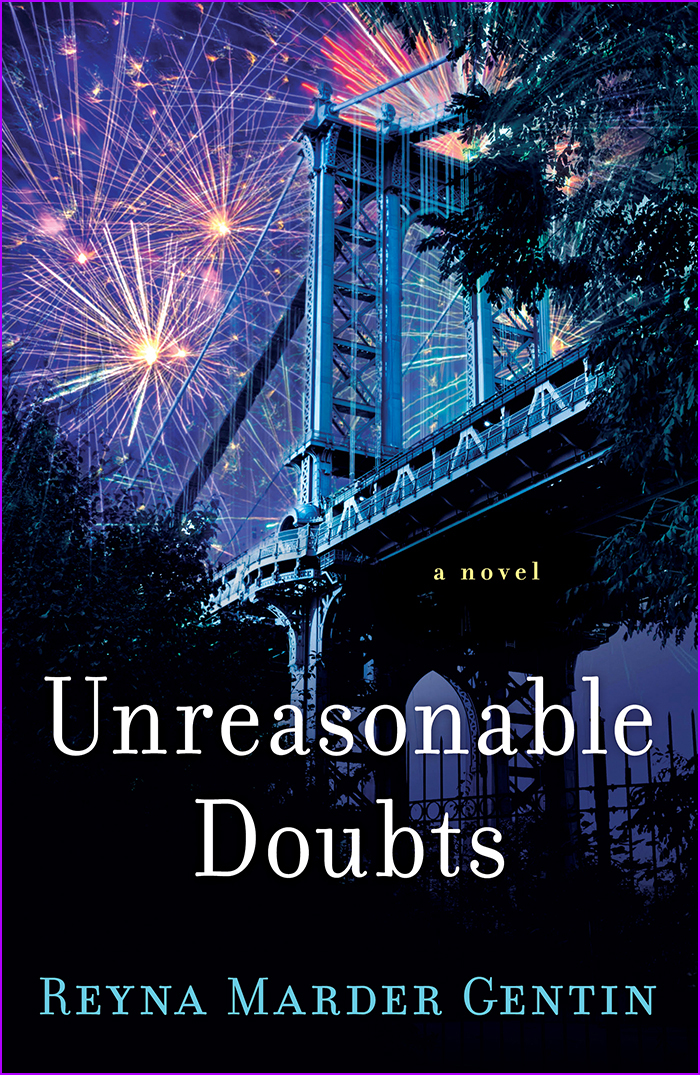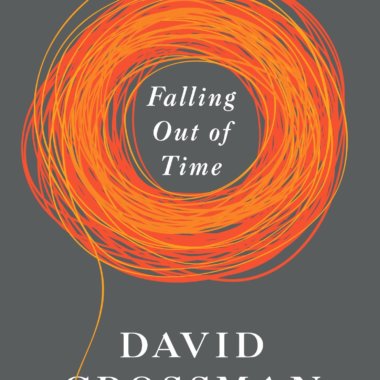The cast of characters in Unreasonable Doubts by Reyna Marder Gentin could have stepped out of a Shakespearean play. Consider the lovers Liana Cohen and Jakob Weiss, the counselor Rabbi Jordan Nacht, the wise colleague Deborah (Deb) Levine, the criminal defense boss Gerry Greenstein, Phyllis Cohen the mother advisor, Irv Mandel the angel, and Daniel Shea the whisperer. Then consider how Marder Gentin moves these characters into action in this page-turner love story and legal thriller.
Characters and plot are two of the most important vehicles that determine the focus and breadth of a novel, but setting, action/conflict, and mood are just as essential to achieve the synergy that spells success or failure. To get the synergy right, the structural composition incorporates these five vehicles in equal measure: the setting must be apposite, the characters true, the plot believable, the conflict/action purposeful, and the mood congruous. And, so it is with Unreasonable Doubts: These vehicles work together like synergistic clockwork in favor of the novel’s success.
Synergistic clockwork is not a given in a novel, but Marder Gentin’s careful structuring of Unreasonable Doubts shows how the novelistic vehicles perform to create the synergy: The omniscient narrator establishes the “where” on the first page and moves the plot forward; the “who” spend their quota of time equal to the characters’ roles and function; the “what” establishes the dynamics among the characters; and the mood fluctuates as the plot and subplots unfold, commensurate with the “where,” “who,” and “what.”
When the story opens in July 2012, Liana is at a professional and personal crossroads. No longer the idealistic appellate attorney defending repeat offenders and guilty clients with the New York City Public Defender’s office, she is in crisis mode. Gerry, her boss, questions her commitment: “We’re public interest lawyers—we need to believe in the guiding principles of the trusted position we hold. And the number one rule must be that we treat each client as an individual, with hopes and dreams, deserving of our energy and skill and passion, no matter what he may or may not have done to land himself in our care.”
She is also ambivalent about her four-year relationship with Jakob Weiss, a rising star at Wilcox & Finney, the prestigious New York City law firm. Liana is in love with Jakob, but she cannot commit to marriage whenever he brings up the topic. Jakob tells her “we’re a team. If you’re a part of me, you’re a part of this too. If I’m going to succeed, you have to help.” Liana is for Team Jakob, but she isn’t sure she is prepared to be a part of the Wilcox & Finney team.
Liana’s life becomes even more complicated when she agrees to argue the appellate case of Daniel Shea that her colleague Deb belatedly hands to her. Shea, convicted on December 3, 2011, for “rape in the first degree” and given fifteen years at the Dannemora Correctional Facility, is unlike any client Liana has previously defended. His appellate case revivifies her lawyer bona fides to prove she is the idealist she once was, and Shea’s intelligence (his letter) and Brad Pitt looks (his photograph) intrigue her, a tricky conundrum she can’t explain. Deb catches on to Liana’s crush and warns her not to do anything stupid, such as visit him in prison—which Liana does—before the oral argument at the Appellate Division of the Supreme Court for the Second Judicial Department of the State of New York.
How do we know that the synergy is working in Unreasonable Doubts? Consider the dynamic between Liana, the public defender, and Jakob, the “up-and-coming” lawyer. Jakob’s climb at Wilcox & Finney requires long hours at the office, socializing with partners, and affords little room to mess up. Liana tries to play the game Jakob wants: to be on his team, which includes social dinners with his boss, Frank.
At one such dinner, Liana tells the group about how she will handle the guilt or innocence of Daniel Shea, the exciting new case she is representing:
“Well, for his appeal it doesn’t matter whether I think he’s innocent or not—what I’m saying is that he didn’t get a fair trial. . . . What happened was that the jury got exposed to information that the defendant’s DNA was a match with a sample taken from another woman some time before. Once the jurors heard that, even though there was no further information about who this other woman was or what the circumstances were, there was no way Danny stood a chance. That’s what I’m arguing.”
Frank is appalled and shakes his head. “So basically, because the jury found out that this lowlife is a serial rapist, you’re going to get him off? How can that be justice? And are you on a first name basis with this bastard?”
Later in the conversation, she says in her sweetest voice: “So, which billionaire industry’s monopoly are you currently protecting to the detriment of the average consumer, Frank? Bank? Airline? Oil company?”
The dialogue between the low-status public defender and the high-powered lawyer shows what’s at stake for Liana. She disparages Wilcox & Finney’s practice just as Frank disrespects her career. As the juxtaposition in the dialogue also shows, Jakob’s career choice plays into Liana’s reluctance to say “yes” to marriage. Liana fears that Wilcox & Finney is swallowing him whole; when they are done with him, there will be “nothing left of the man” she fell in love with.
This dialogue is significant because it not only juxtaposes Liana’s point of view with Frank’s, but it also shows how Marder Gentin exploits this scene to give us more information about Liana that we might infer but which we now know to be a fact. We read the dialogue, we see both Liana and Frank in action, and we conclude that Liana does not like the world in which Jakob operates. The juxtaposition gives readers not only insight into her motives and point of view, but it also increases their investment in her future. Juxtaposition is also a prerequisite to the synergistic clockwork of the whole novel, as the chapters build in suspense and intrigue toward the denouement.
Juxtaposition in the above dialogue is only one of the many times Marder Gentin embeds this literary technique in the novel—and for good reason. Juxtaposition maximizes the synergistic effect in countless ways, whether it is placing characters, actions, settings, or moods side by side. Indeed, a juxtaposition of the Jakob-Danny duo illustrates this point, as it gets to the heart of the novel and the overarching theme: When it comes to being “in love,” is there proof beyond a reasonable doubt? To answer this question, the test case seems to be a high-priced emotional extrication from Danny.
The following two scenes show how Martin Gentin uses juxtaposition to reveal Jakob and Danny as opposites.
This scene takes place at the Jewish wedding of Jakob’s cousin Zack in the first third of Unreasonable Doubts.
The rest of the night was a whirlwind of traditional hora circle dancing, gorging on too-rare prime rib, and winding up, at nearly two in the morning, with slow dancing. Jakob held Liana close as they swayed, and she felt as though she could stay in the moment for all time, protected and safe and loved.”
“Hey, Jay, listen to what they’re playing!”
“Mmm,” he murmured in her ear, “I had a little word with the bandleader. . . .”
The tones of “Till There Was You” filled the ballroom.
This is so perfect. Why am I so scared?
This scene takes place in the last third of the novel, after Danny is exonerated and unexpectedly visits Liana at her apartment. He knows her address from a letter she had written to him while he was incarcerated.
He kissed her forehead and her eyelids and her throat, and his hands wandered the length of her body. She gave in to the pleasure, shutting out the notes of protest her clouded mind tried to send. She felt so out of it that she had the fleeting thought that maybe he had spiked her drink.
Danny deftly moved Liana onto her back, his hands underneath her cami. “Wearing a bra today, Counselor? What a shame,” he said as he expertly removed it with one hand without taking off her top . . . .
The first scene shows Liana content in Jakob’s arms; the second scene shows Liana at the mercy of Danny’s sexual motives. No description could match the persuasive force this juxtaposition reveals about these two men and Liana’s relationship with them. Further, it exposes the emotional layers that may not have otherwise been accessible to Liana—Jakob and Danny as foils of each other—compelling Liana to resolve her relationship with Jakob. Juxtaposition, such as in the above scenes, is an essential technique in Marder Gentin’s toolkit that reinforces a synergistic effect on every page. It is like a magnetic track that never veers off course.
Liana loves Jakob but allows Danny’s intrusion. She finds deep friendship with her dying colleague Deb and awakens to paths she had previously foreclosed through Rabbi Nacht’s wise counsel. She follows up on a business connection that Irv, her mother’s friend, gives her and closes a difficult chapter in her life.
Liana does not rest her case on unreasonable doubts.



